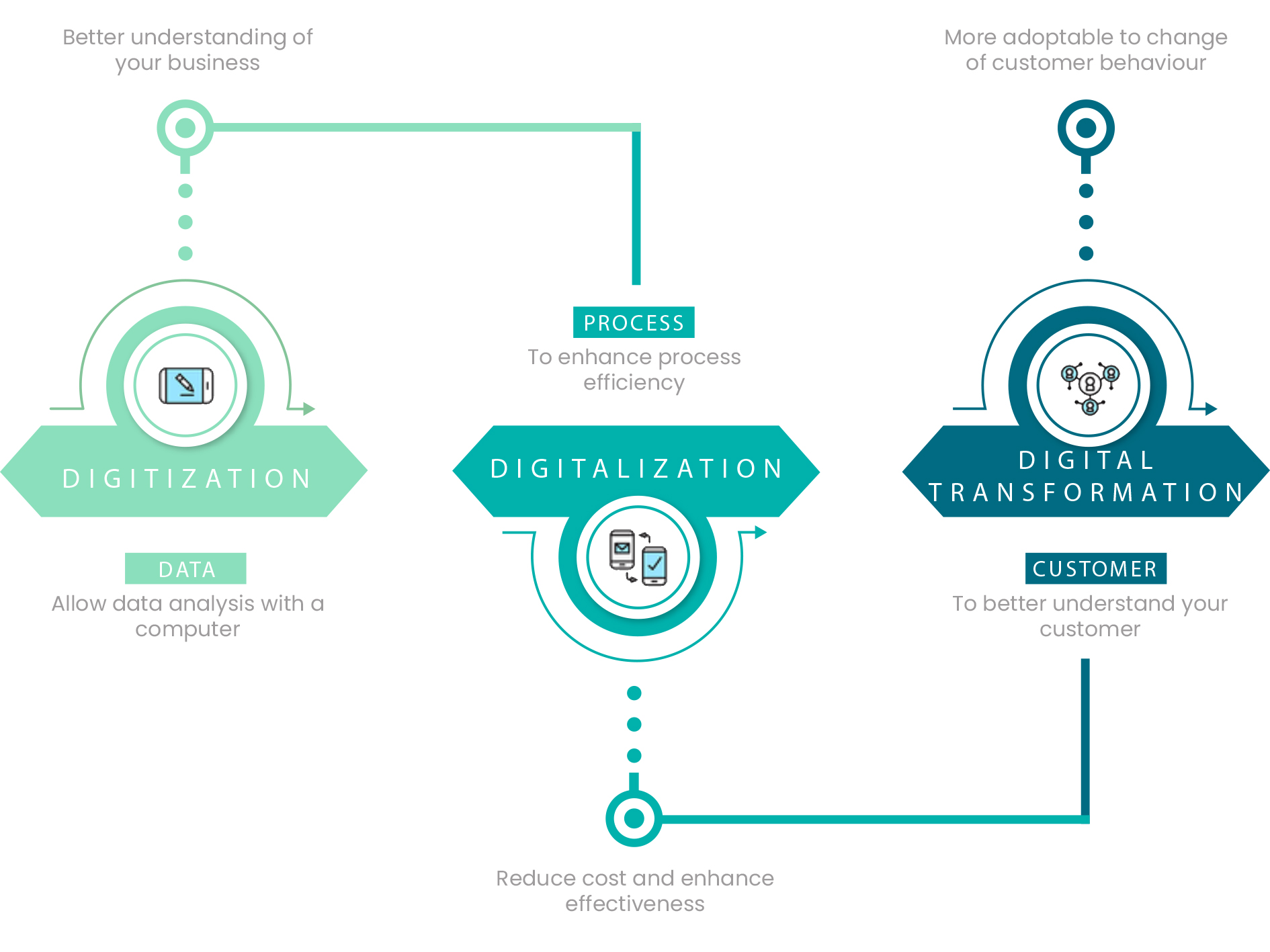“It is not the strongest of the species that survives, but rather, that which is most adaptable to change”
Charles Darwin
Why is it so hard to see that your business needs a reinvent? The two classic example were Eastman Kodak (The silver-halide film photography giant) once one of the largest most successful companies and brands in the world, invented the digital camera in 1975. They could have been the leader in digital photography but Kodak filed for bankruptcy in 2012.
Another example is Sony Corporation, the Japanese mega-giant electronics company once held the lion’s share of the video camera market. The board rejected the idea in the 2000's, not wanting divert attention away from the cash cow video business they had. By 2014, GoPro had almost 50% of the video market and Sony’s share was less than 8%.
Today, companies like Amazon and Google seem to be aware of this concept and continually change, invent and sometimes buy up new technologies to keep their business fresh and out-front.
While small and midsize entrepreneurial companies don’t have the humongous resources that these giants have, we can certainly use their powerful philosophy and reinvent our businesses when we are doing well and avoid the mistake of waiting until it’s too late. It’s the best way to ensure our survival and success.
How Businesses are Advancing Today?
The physical world is coming online as objects, devices, and machines acquire more digital intelligence. What’s emerging is more than just an “Internet of Things”; it’s a new layer of connected intelligence that augments the actions of individuals, automates processes, and incorporates digitally empowered machines into our lives, increasing our insight into and control over the tangible world.
There are benefits for consumers and businesses. Consumers become better informed and better equipped to influence the ways they experience everything around them. And businesses get real-time connections to the physical world that allow machines as well as employees to act and react faster—and more intelligently.

Why Now?
Explosion of connected devices: The installed base of the Internet of Things is estimated to reach approximately 212 billion in 2020. This will include 30 billion “connected (autonomous) things” that same year. Increased bandwidth: Global IP traffic is expected to nearly double between 2013 and 2016, and broadband is expected to speed up more than twofold. Advanced robotics: From agriculture to oil fields, advances in robotics are empowering human-robot collaboration in industries beyond the factory floor. Several leading car manufacturers have committed to bringing autonomous car technologies to market by 2020.
Rise of real-time analytics: Data sources are growing at an unprecedented velocity, and the ability to loop insights immediately back into the decision process is supporting automating responsive actions like never before. By 2017, more than 50 percent of analytics implementations will make use of event data streams generated from instrumented machines, applications, and/or individuals. If you are still thinking that these changes will make no impact to your business, think again!
Traditional industries are being re-invented
Having access to instantly actionable decisions has served the industrial world well. Over the last two decades, industrial companies have enjoyed radical efficiency improvements by integrating digital technologies throughout their operations—from RFID tags in supply chains to robotics and remote monitoring and control in oilfield and pipeline operations. What’s changing to put digital-physical systems on boardroom agendas today is their infiltration into more industries and their ability to disrupt so many sectors of global economies.
We are now moving towards the age of Indutrial 4.0, The same improvements that manufacturers have made to drastically improve safety and operational efficiency and, in some instances, to augment the ability to scale are now expanding to every industry. Today’s digital-physical systems range from chef robots that can serve a custom gourmet burger every 10 seconds to smart grid technologies that are able to identify individual appliances and their discrete energy consumption—by simply installing a single device on a smart meter that can read, analyze, and decipher complex electrical frequencies.
Building owners, property managers, and industrial equipment vendors are benefiting from the reduced cost and increased capabilities of digital-physical systems to drive new experiences with building operations. They are adopting integrated solutions such as continuous commissioning systems that make use of sensors throughout a building’s workspaces and mechanical equipment to collect data with millisecond resolution on building performance.
Four years ago, Microsoft relied on a team of reactive operations staff traversing the enormous corporate campus in trucks responding to hot and cold calls. Today, the company uses a software overlay which visualizes the existing 500 million data transactions every 24 hours and is managed by a staff of highly skilled engineers who is harnessing big data and using it to improve Microsoft employees’ experience and drive down energy costs.
Schneider Electric is going one step further by incorporating some of the world’s most advanced weather modeling data into its building automation systems, allowing facilities managers to factor external climate conditions into their decisions and making it easier to automate many of those decisions.
Industries from warehousing to agriculture are seeing similar advances. With robotic systems for order fulfillment enabling big reductions in shipment times, warehouses can process more orders in less time with fewer employees. Taking robots to the skies, the use cases for autonomous drones are abundant and are disrupting a diverse group of industries. Agricultural applications use infrared cameras to pinpoint crops that are receiving too much or too little water, first responders use drones to detect survivors of accidents and natural disasters and to deliver supplies to those emergency zones, and road surfaces and traffic congestion are monitored by drones.


Are you ready for this digital evolution?
Those that get there first will be able to disrupt their existing markets and penetrate new ones. They will be in control of their new digital destinies. While many other companies are doing "something" to adopt this new trend, mostly ranged from Digitization, Digitalization and Digital Transformation.
Digitization
Digitization essentially refers to taking analog information and encoding it into zeroes and ones so that computers can store, process, and transmit such information.
“Digitization is the process of changing from analog to digital form” – a definition few would disagree with!
There are many examples of digitization in enterprises today, as there have been for many decades. Converting handwritten or typewritten text into digital form is an example of digitization, as in factory where you might be typing up production record onto excel spread sheet for further analysis. Another example would be for staff to input sales and purchase record of the company onto their ERP system.
In the enterprise context, digitization is important both for dealing with analog information as well as ‘paper-based’ processes – where ‘paper-based’ is nothing more than a metaphor for analog.
It’s important to remember, however, that it’s the information you’re digitizing, not the processes – that’s where digitalization comes in.
Digitalization
Unlike digitization, digitalization doesn’t have a single, clear definition. ‘Digitization’ and ‘digitalization’ are two conceptual terms that are closely associated and often used interchangeably. In general, we refer to digitalization as the way in which many domains of work activities are restructured around digital communication and media infrastructures.
Another way of looking into it is how work communication is carry out at work. As such interactions move away from analog technologies (paper letter, analog telephone calls) to digital ones (email, chat, social media), nowadays all aspects of work communication are digitalized.
For the past 20 years, as organizations implement ‘digital technologies’ – which in this context really means computers and other information technology – people’s jobs change. Imagine factory workers putting down their hammers and lathes and instead using computer-controlled equipment, for example.
As technology advances and more software platform being built to enhance business efficency, business are increasingly adopting to the Software as a Service (SaaS) approach by their vendors which allows digitalization to grow more rapidly than ever.







